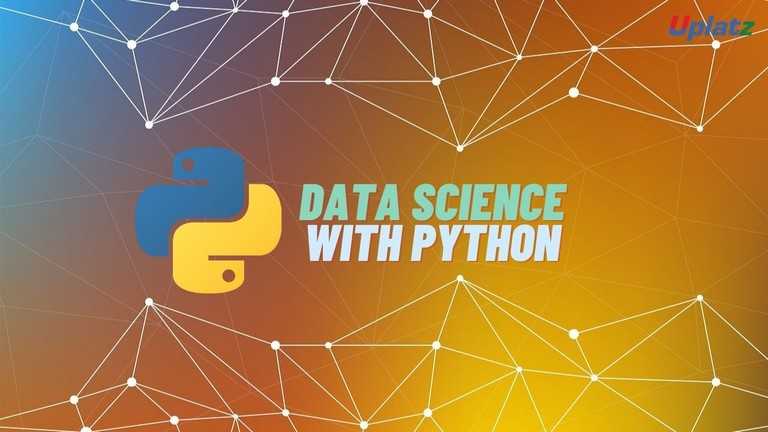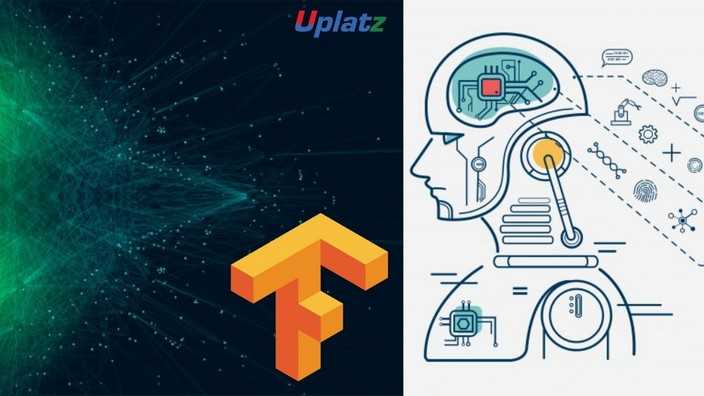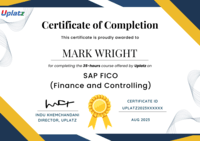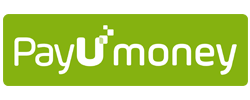Hugging Face Transformers for NLP
Master Hugging Face Transformers to build modern NLP, LLM, and generative AI applications—fine-tune, deploy, and scale with confidence.Preview Hugging Face Transformers for NLP course
View Course Curriculum Price Match Guarantee Full Lifetime Access Access on any Device Technical Support Secure Checkout Course Completion Certificate 93% Started a new career
BUY THIS COURSE (
93% Started a new career
BUY THIS COURSE (GBP 12 GBP 29 )-
 88% Got a pay increase and promotion
88% Got a pay increase and promotion
Students also bought -
-

- Data Science with Python
- 45 Hours
- GBP 12
- 2931 Learners
-

- Deep Learning with TensorFlow
- 50 Hours
- GBP 12
- 333 Learners
-

- Machine Learning with Python
- 25 Hours
- GBP 12
- 3518 Learners

Hugging Face Transformers for NLP and LLM Applications – Online course
Hugging Face Transformers for NLP and LLM Applications is a meticulously designed, self-paced training program that introduces you to the transformative power of state-of-the-art transformer models and the dynamic Hugging Face ecosystem. This course is crafted to provide both foundational understanding and hands-on expertise for building cutting-edge Natural Language Processing (NLP) and Large Language Model (LLM) solutions.
As NLP and LLM technologies redefine how machines interact with human language, professionals across industries—from healthcare to finance, and from academia to customer service—are leveraging these tools to automate, analyze, and enhance communication. The Hugging Face library has emerged as the leading open-source platform that simplifies the use of transformer models in real-world applications. This course aims to bridge the gap between theoretical knowledge and practical implementation by guiding learners through a rich, project-based curriculum.
Whether you're a data scientist, software developer, AI researcher, machine learning engineer, or an aspiring NLP specialist, this program is designed to help you master the essential tools and techniques required to work with pretrained transformer models like BERT, GPT, T5, RoBERTa, DistilBERT, and more. From building simple text classification pipelines to deploying powerful, customized LLMs, the course enables you to confidently create robust NLP applications that solve real-world challenges.
You will start by understanding the basics of transformer architectures and how transfer learning has revolutionized NLP. Gradually, you’ll move into the Hugging Face transformers, datasets, and tokenizers libraries, learning to load, fine-tune, and deploy models with ease. Throughout the course, you’ll gain practical experience in solving a variety of NLP tasks such as:
- Sentiment analysis and emotion detection
- Named entity recognition (NER)
- Text summarization and translation
- Text generation and question answering
- Multimodal applications that integrate text with images or audio
The course goes beyond basic model usage. You will explore techniques for optimizing model performance through advanced fine-tuning, hyperparameter tuning, and knowledge distillation. Additionally, you’ll be introduced to the Hugging Face Hub and model sharing features, enabling you to contribute to and benefit from a thriving global community of AI practitioners.
To solidify your learning, the course includes interactive labs and a capstone project, giving you the opportunity to implement an end-to-end NLP solution—from data preprocessing and model selection to training, evaluation, and deployment. This hands-on approach not only reinforces key concepts but also builds your portfolio, which can be showcased to employers or academic institutions.
Upon successful completion, you will receive a Course Completion Certificate, a testament to your proficiency in using Hugging Face tools for NLP and LLM applications. This certificate can support your candidacy for advanced AI roles or professional certifications in machine learning and data science.
Who Should Enroll?
This course is ideally suited for:
- Data Scientists seeking to integrate NLP into analytics and modeling workflows
- Machine Learning Engineers interested in production-ready NLP solutions
- AI Researchers and Academics exploring transformer architectures
- Software Developers looking to add intelligent language capabilities to applications
- Technical Product Managers aiming to understand the capabilities and limitations of LLMs
- Students and Enthusiasts preparing for careers in artificial intelligence and machine learning
Basic Python knowledge is recommended, and some familiarity with machine learning concepts will be beneficial.
How to Use This Course Effectively
To get the most out of this self-paced learning experience, follow the structured guidance below:
1. Start with Clear Goals
Before beginning the course, reflect on your personal or professional goals. Are you building a chatbot, automating document summarization, or researching LLM behavior? Defining your end goal will help you stay focused and select the most relevant topics as you progress through the content.
2. Follow the Sequential Flow
While you have the freedom to explore different modules, it’s best to follow the course in order—especially if you're new to transformers or Hugging Face. Early modules introduce key concepts and tools that form the foundation for more advanced topics later on.
3. Set Up Your Development Environment
Install the required tools and libraries before diving into the hands-on labs. We recommend using Google Colab, Jupyter Notebooks, or VS Code with a virtual environment. Make sure you have access to GPUs (via Colab or locally) for faster model training and experimentation.
4. Engage Deeply with the Practical Exercises
Each module features coding labs, quizzes, and small projects designed to reinforce what you've learned. Don’t just copy-paste code—try to tweak parameters, change datasets, or test alternative models. Use these exercises to explore and fail fast—it’s the best way to learn.
5. Document Your Progress
Maintain a digital notebook or GitHub repository to document your learning, experiments, and code snippets. This will not only help you revise complex topics but also serve as a portfolio when showcasing your skills to peers or employers.
6. Take Your Time with the Capstone Project
The capstone project is your opportunity to implement everything you've learned in a real-world context. Choose a use case that excites you—be it hate speech detection, summarizing medical documents, or building a question-answering interface. Plan your approach, manage your time, and aim for quality and innovation.
7. Engage with the Community
One of the strengths of Hugging Face is its active and inclusive community. Participate in forums, GitHub discussions, and the Hugging Face Discord server to get help, share insights, and stay updated on new releases, models, and tutorials.
8. Review and Repeat Key Concepts
Transformer-based models and the Hugging Face ecosystem are powerful but can be complex. Don’t hesitate to revisit video lectures and labs. Use Hugging Face’s extensive documentation as a supplementary resource.
9. Apply What You’ve Learned Beyond the Course
Extend your learning by applying models to your own datasets or contributing to open-source projects. Create NLP APIs, integrate LLMs into web applications, or even experiment with Hugging Face’s Inference API and Spaces to deploy and share your applications.
10. Showcase Your Certificate and Work
Add your Course Completion Certificate to your LinkedIn profile or resume. Share your capstone project and notebooks on GitHub or other platforms to demonstrate your skills to employers or collaborators.
This course is more than just a training program—it’s a launchpad into one of the most exciting areas in modern AI. By the end of your journey, you’ll not only have mastered the practical use of Hugging Face Transformers for NLP and LLMs, but you’ll also be equipped with a powerful toolkit to build intelligent, human-like language applications that push the boundaries of innovation.
Course/Topic 1 - Course access through Google Drive
-
Google Drive
-
Google Drive
By completing this course, learners will:
- Understand the transformer architecture and its impact on NLP evolution.
- Utilize Hugging Face libraries (Transformers, Datasets, Tokenizers) effectively.
- Load, fine-tune, and evaluate pretrained models like BERT, GPT, RoBERTa, and T5.
- Perform tokenization, data preparation, and handle large-scale datasets.
- Apply transformers to real-world tasks such as sentiment analysis, NER, QA, and summarization.
- Optimize performance using quantization, mixed precision, and Trainer API.
- Serve models using Hugging Face Inference API and ONNX/TensorRT.
- Explore multimodal models like CLIP and DALL·E and future trends in LLMs.
Course Syllabus
Module 1: Introduction to Transformers and Hugging Face
- Evolution of NLP, Transformer architecture, Hugging Face ecosystem, Pretrained models (BERT, GPT, RoBERTa, T5)
Module 2: Tokenization and Data Preparation
- Tokenization (WordPiece, BPE, SentencePiece), Tokenizers library, Dataset loading and processing
Module 3: Fine-Tuning Pretrained Models
- Text Classification (BERT for sentiment analysis)
- Named Entity Recognition (NER)
- Question Answering (SQuAD datasets)
Module 4: Advanced Use Cases and Customization
- Text Generation (GPT, T5), Summarization (T5), Translation (mBART), Custom layers and architecture
Module 5: Performance Optimization
- Mixed precision, Trainer API, Quantization with BitsAndBytes, ONNX, TensorRT, Model serving with Inference API
Module 6: Multimodal Models and Future Trends
- CLIP, DALL·E, Image-text retrieval, VQA, Generative AI and LLM trends
Module 7: Capstone Project and Certification
- Real-world project (e.g., chatbot, QA system), Implementation, Quiz and coding assessment
Upon successful completion of the Hugging Face Transformers for NLP and LLM Applications course, learners will receive a Course Completion Certificate from Uplatz, demonstrating their skills in building, fine-tuning, and deploying state-of-the-art NLP and LLM solutions.
This certificate serves as a valuable proof of your ability to work with Hugging Face tools and advanced transformer-based models. It can boost your profile for roles in AI/ML, data science, and NLP engineering.
The course also helps learners prepare for interviews and advanced certifications in AI and machine learning, including Hugging Face’s own certificate programs and broader industry-recognized NLP certifications.
Career & Jobs
The demand for professionals skilled in NLP and LLMs is soaring. Hugging Face is at the forefront of AI innovation, making this course highly relevant for a wide range of AI careers.
Career Opportunities After This Course
- NLP Engineer
- AI/ML Developer
- Data Scientist (NLP Focus)
- LLM Developer or Researcher
- Machine Learning Engineer
- AI Consultant (Language Models)
- Research Assistant in Generative AI
Industries Hiring NLP/LLM Experts
- AI Research Labs
- Tech & Software Companies
- E-commerce & Customer Support Platforms
- Healthcare & Bioinformatics
- Financial Services & Risk Analytics
1. What is a transformer model and why is it effective in NLP?
Transformers use self-attention mechanisms to model relationships between all words in a sentence simultaneously, enabling better context understanding and parallelization.
2. What are pretrained models in NLP?
Pretrained models are transformer architectures trained on large corpora (like BERT, GPT) and fine-tuned for specific tasks, reducing the need for task-specific model building.
3. What are tokenizers and why are they important?
Tokenizers break text into tokens that models can understand. Hugging Face supports WordPiece, BPE, and SentencePiece formats.
4. How do you fine-tune a model using Hugging Face?
Use the Trainer API with labeled data, define training arguments, and supply a model checkpoint to adapt to your specific NLP task.
5. What is the difference between top-k and top-p sampling in text generation?
Top-k limits choices to the top k probable tokens, while top-p (nucleus sampling) includes tokens until cumulative probability exceeds p.
6. How does Hugging Face handle large models during training?
It supports model parallelism, quantization (BitsAndBytes), mixed-precision training (with accelerate), and model sharding.
7. What are CLIP and DALL·E models?
CLIP connects images and text in a shared embedding space; DALL·E generates images from text. Both are multimodal transformer models.
8. How do you deploy a Hugging Face model?
Use the Inference API or convert to ONNX for serving with optimized runtimes like TensorRT.
9. What are practical applications of Hugging Face models in enterprises?
Chatbots, sentiment analysis, document summarization, QA systems, translation, and content generation.
10. What’s the future of LLMs?
LLMs are expanding into multimodal capabilities, contextual memory, agent-like reasoning, and improved efficiency for edge deployment.









